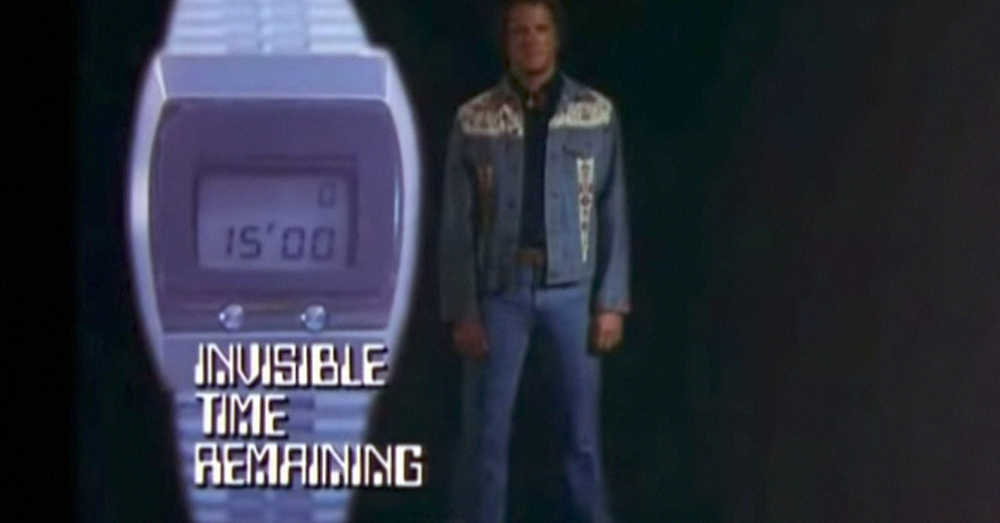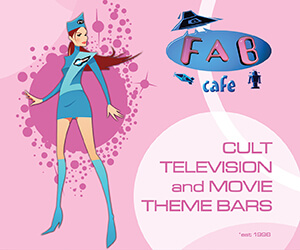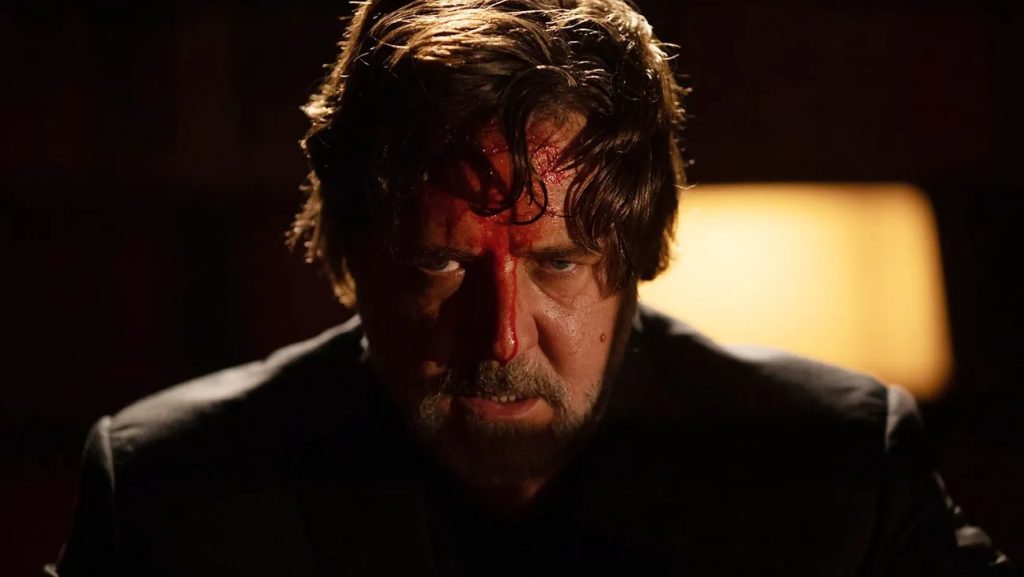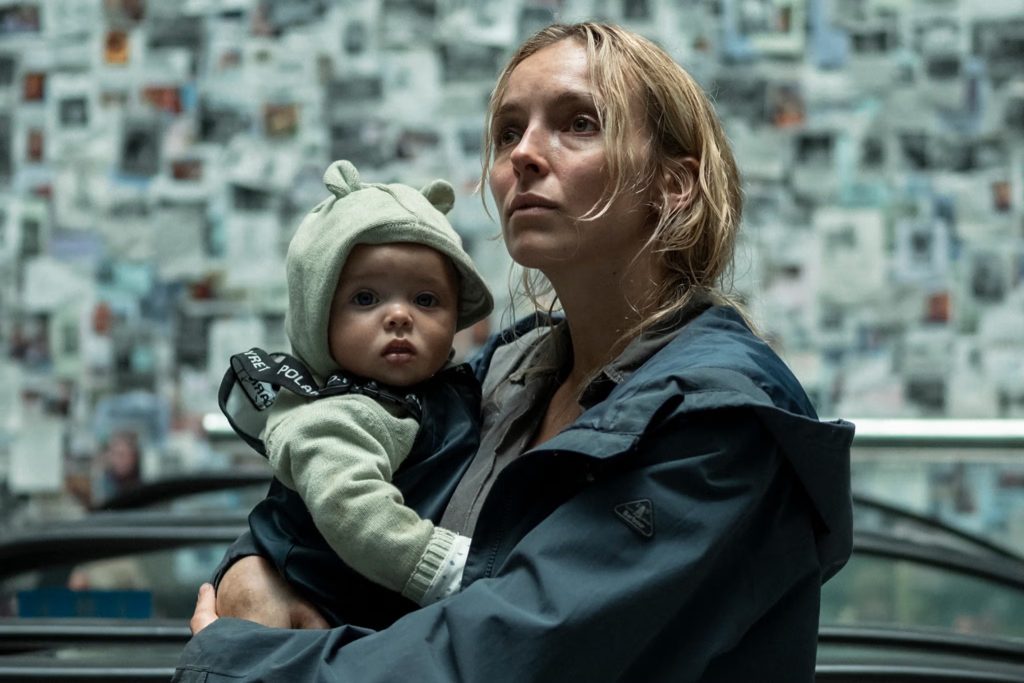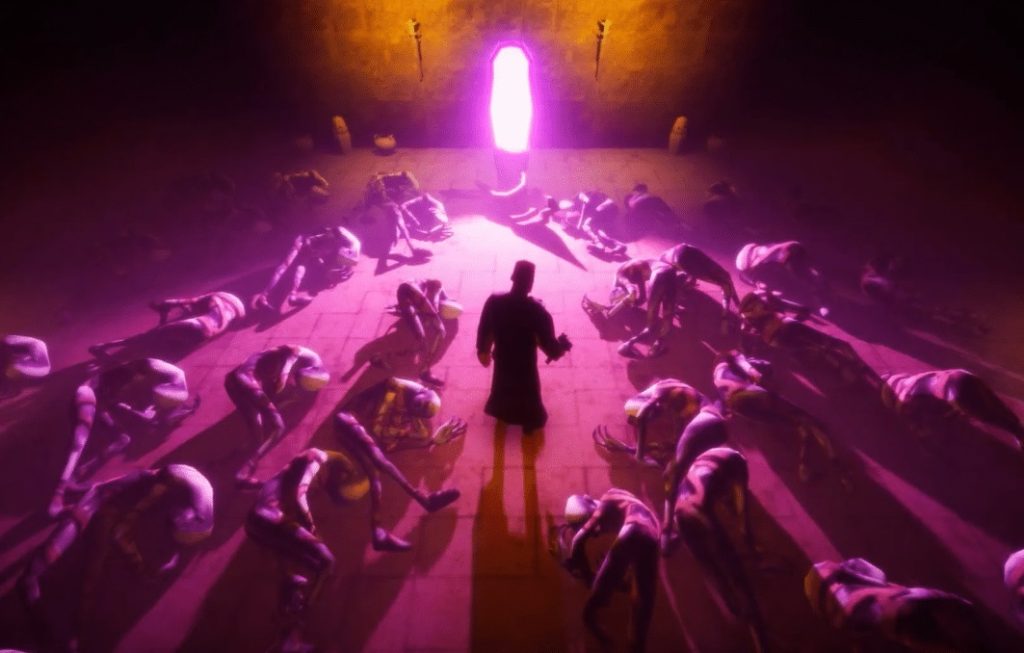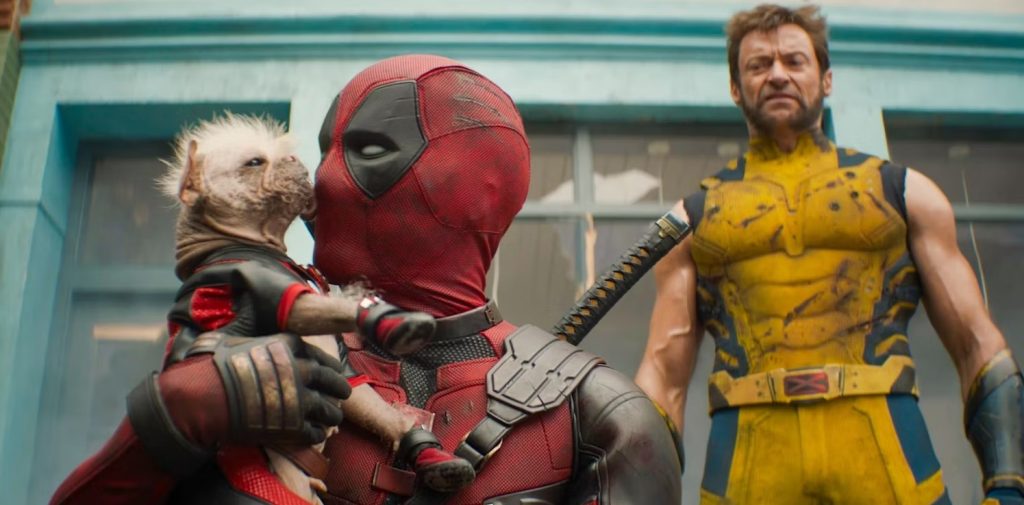Ah, telephemera… those shows whose stay with us was tantalisingly brief, snatched away before their time, and sometimes with good cause. They hit the schedules alongside established shows, hoping for a long run, but it’s not always to be, and for every Street Hawk there’s two Manimals. But here at STARBURST we celebrate their existence and mourn their departure, drilling down into the new season’s entertainment with equal opportunities square eyes… these are The Telephemera Years!
1976-77
For some reason – the US’s failure in Vietnam is often blamed – the American public could not get enough of the rock ‘n’ roll era in the 1970s, a point never more heavily underlined than with the success of Grease in 1978. It started before that, of course, with George Lucas’s American Graffiti giving birth to the Fonz on TV. It was almost as if the whole country wanted to forget the last decade or so and that Happy Days was the number one show for 1976-77 is no surprise. That spin-off Laverne & Shirley is number two is perhaps a little more surprising, but there’s Korean War comedy M*A*S*H at number four to ram things home. Outside this yearning for the past but also making headway in the TV ratings were telefantastic Jiggle TV mainstays Charlie’s Angels and The Bionic Woman, as well as The Six Million Dollar Man, Baretta, and Hawaii Five-O; if there was somewhere the US TV viewing audience wanted to be in 1976 it was not the 1976 outside their door.
Several big shows bade their farewells this season with The Streets of San Francisco finally running out of road, the departure of The Mary Tyler Moore Show and Phyllis setting women’s emancipation back a few years, and Sanford and Son a victim of America’s disposable Capitalism. Coming in to take their places were interfering coroner Quincy, bear-worrier Grizzly Adams, and Roots, the first of the blockbuster mini-series that gave schoolchildren everywhere license to say Kunta Kinte. But those were all hit shows – what about those shows that didn’t hang around, that didn’t make much of an impact on the 1976 public? This is the story of four more failed TV shows…
Sugar Time! (ABC): Barbie Klein became an overnight star at the age of eighteen when, as part of the ensemble cast of Playboy After Dark (an attempt to portray an “authentic” party at Hugh Hefner’s place), she caught Hefner’s eye. They embarked on a relationship which saw Klein – now calling herself Barbi Benton at Hefner’s request – put front and centre of the Playboy empire, appearing as a centrefold on four occasions and given an enlarged role on After Dark. It was Benton who discovered the Playboy Mansion in Los Angeles and encouraged Hefner to buy it, and the two were together from 1969 to 1976.
Alongside her Playboy duties, Benton also appeared in films – 1970’s How Did a Nice Girl Like You Get into This Business? – and on TV as part of the cast of Rowan & Martin’s Laugh-In and Hee Haw, as well as guesting on the likes of The Love Boat and Fantasy Island. In 1977, she was cast as Maxx Douglas, a nightclub hatcheck girl looking to make it big as a rock star with her band, Sugar Time! A three-piece, the band also included dental hygienist Maggie and dance instructor Diane, with the cast also including Wynn Irwin (who’d appeared alongside Dom De Luise in On the Buses remake Lotsa Luck) as Al Marks, the owner of a club which allowed the girls to perform… for free.
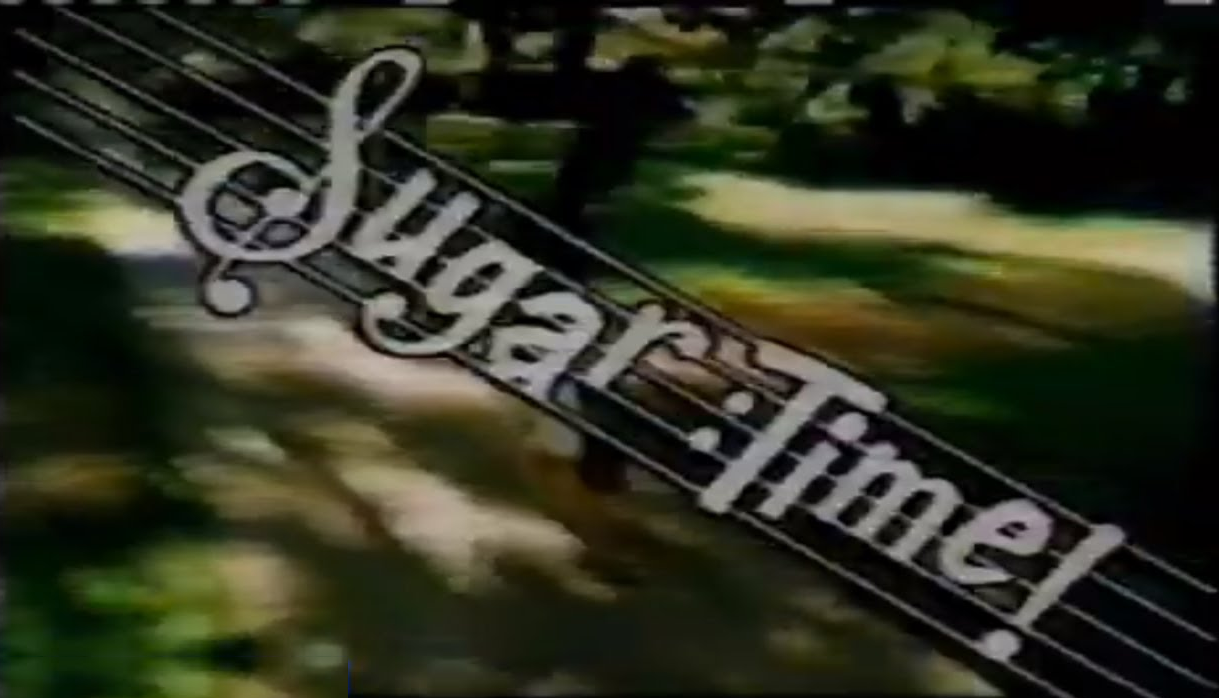
Sugar Time! was created by James Komack, who’d also created The Courtship of Eddie’s Father and guided Welcome Back, Kotter to the screen, as well as last week’s Mr T & Tina, and he had high hopes for his trio of unknowns to strike a (sorry) chord with American audiences. Maxx, Maggie, and Diane – or Benton, Marianne Black, and Didi Carr – sang the theme tune, “Girls, Girls, Girls,” written by Paul “We’ve Only Just Begun” Simpson, but the series sat on the shelf until August 1977 when it was put out on Saturday nights in a slot vacated by Wonder Woman.
Four episodes aired before Sugar Time! was shunted by the arrival of season two of Fish, with episode five randomly popping up on a Monday night in November. It was clear that the network saw Komack’s show as nothing but a space filler, which is a shame because the single surviving episode on YouTube reveals a sweet, good-natured comedy with some likeable leads. Episode six then had to wait until April 1978, when it began a run of six episodes that ended in late May, leaving the last two episodes unaired.
By that point, Komack’s follow-up series Roller Girls had also failed to find an audience and he had one foot out of the business, although he did direct Porky’s Revenge in 1985. Barbi Benton kept acting for a few more years, most notably appearing in schlock horror classic X-Ray in 1982 but retired after the birth of her first child in 1986 and went into real estate, putting that Playboy Mansion-spotting talent to good use at last.
Gemini Man (NBC): David McCallum starred in the 1975 TV version of The Invisible Man, loosely inspired by HG Wells 1897 novel, as Daniel Westin, a scientist who accidentally turns himself invisible while trying to discover the secret of teleportation. The series was a huge flop for NBC, who cancelled the show after just thirteen episodes had aired, ultimately leading to McCallum returning to the UK and gifting us Sapphire & Steel.
NBC, though, had not had their fill of the concept and producer Harve Bennett engaged The Outer Limits creator Leslie Stephens to retool the basic Invisible Man idea in a way that would use the special effects they developed for the McCallum show but in a much cheaper way. Stephens came up with Gemini Man, the story of Sam Casey, a hip, motorcycle-riding, denim-clad secret agent who is exposed to a huge dose of radiation while trying to retrieve a downed Soviet satellite. Rather than kill him, the radiation turns Casey invisible, a process reversed with the use of a special wristwatch that stabilises his DNA. Using the watch, Casey can turn himself invisible at will, but only for fifteen minutes a day. Any more and he will die and so Casey must “NEVER EXCEED!”
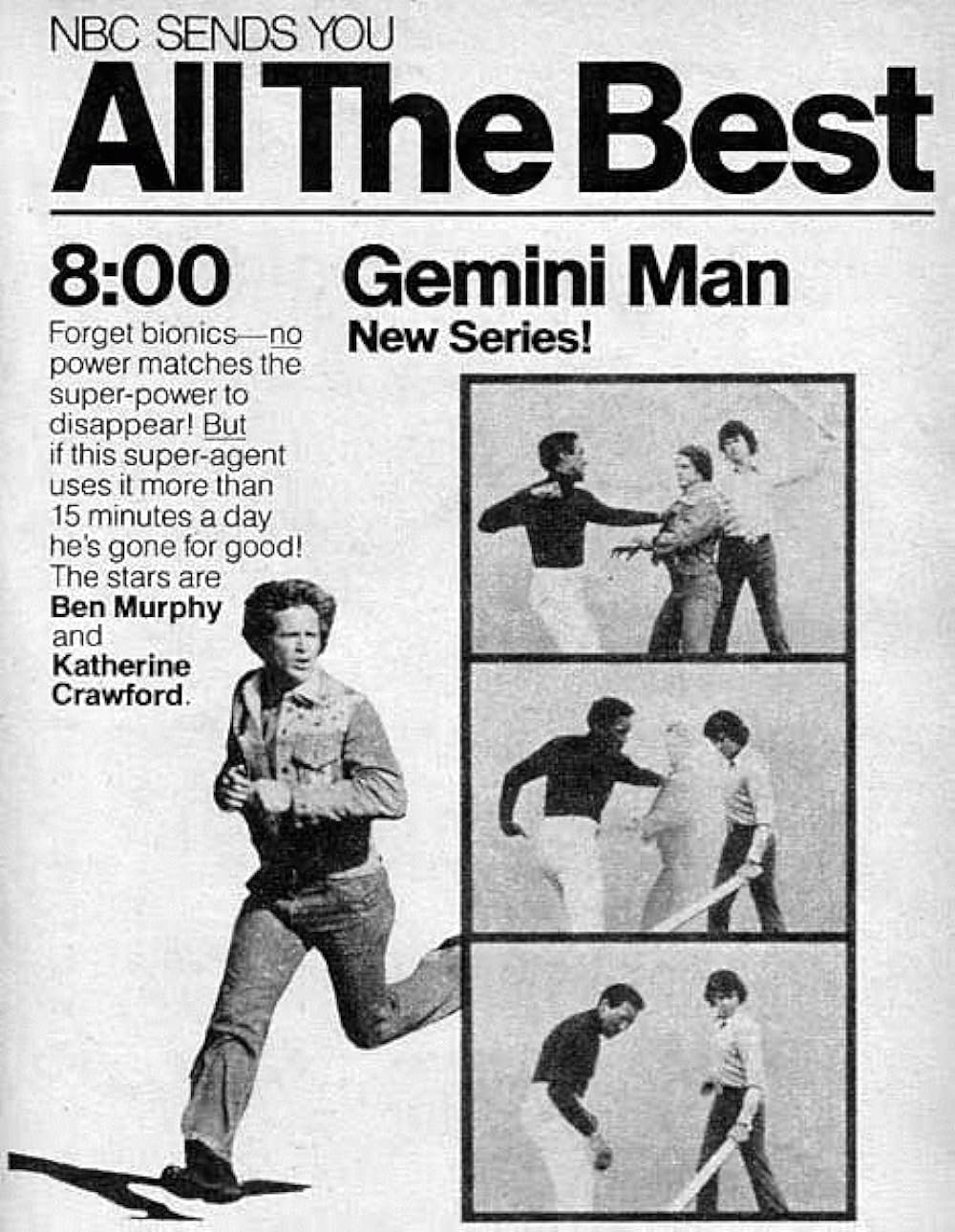
Starring as Casey was Ben Murphy, three years after finishing the role that made his name, “Kid” Curry in Alias Smith and Jones. His follow-up show, Griff with Lorne Greene, had lasted for just thirteen episodes before being cancelled, though, and he must have hoped that Gemini Man – where he was backed by Katherine Crawford and William Sylvester – would turn a once promising career around. A pilot was shot from Stephens’s script and did well enough when it aired in May 1976 that NBC took the show to series for the new Fall season.
Unfortunately, despite a writing crew that featured Robert “Psycho“ Bloch, future Arnie wrangler Stephen E de Souza, and Steven Bochco, audiences just weren’t interested in stories featuring Casey fighting robots, tangling with doppelgangers, and guarding a women’s swimming team in enough numbers to justify the budget. Given the low ratings the first few episodes garnered, NBC made the decision to pull the plug after just five episodes had aired, although the rest of the eleven finished adventures were later shown on BBC1 in the UK, where it became enough of a hit to earn a soundtrack album and an annual from Brown Watson.
Blansky’s Beauties (ABC): Ah, there’s nothing quite like the 1976 ABC approach to spin-off shows, which doesn’t waste precious time on such trivial matters as waiting for audiences to get to like a character enough to warrant their own show. Instead, ABC would introduce a character in one of their most popular shows and immediately launch their own programme, safe in the knowledge that anyone who appears in as little as a single episode of Welcome Back, Kotter was sure to be able to convince that show’s audience to follow them across the schedules.
Happy Days was the king of the spin-off, of course. To be fair, Laverne and Shirley appeared in three episodes of that show before they got their own, and Joanie and Chachi’s love affair would play out across five seasons of the parent show before their own, doomed spin-off, but Blanksy’s Beauties was another thing altogether. Later, Mork from Orson would also appear in just a single episode before getting his own show but they at least waited to see viewer feedback before greenlighting it (and rewriting the Happy Days episode he appeared in to make it possible).
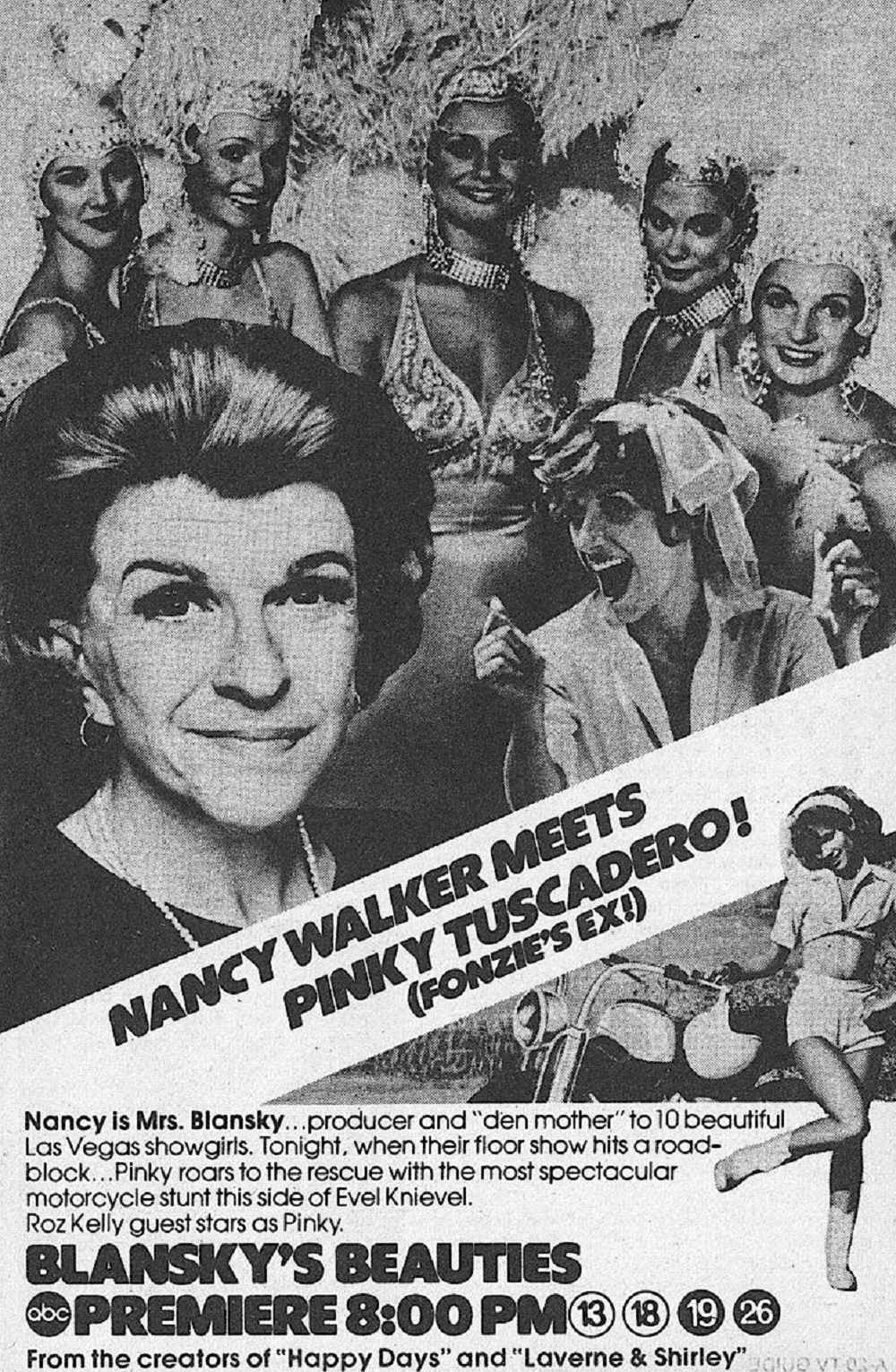
Nancy Blansky was introduced in a third anniversary celebration episode of Happy Days on February 4th 1977. Howard Cunningham’s cousin, she was visiting from Las Vegas, where she owned an apartment complex, but eight days later had transformed into a den mother for showbiz girls, having apparently enjoyed a long career as a dancer herself. And, despite Nancy Walker looking no older than her earlier appearance, there was definitely room for that because Blansky’s Beauties was set in 1977, even featuring Laverne & Shirley’s Eddie Mekka as the younger cousin of his character on that show!
The ties to the Happy Days universe didn’t end there, with Fonzie’s ex Pinky Tuscadero appearing in the first episode and Pat Morita reprising the role of Arnold after the failure of Mr T & Tina (see last week’s The Telephemera Years for that story), as well as a few mentions of a clumsy girl called Laverne. Joining Walker and Mekka in the cast were future Happy Days regulars Lynda Goodfriend and Scott Baio (a proto-Chachi as the lecherous twelve-year-old Anthony), as well as Caren Kaye and Johnny Desmond, with the whole shebang overseen by Happy Days’ Bob Brunner, Garry Marshall, and Arthur Silver.
Unlike Laverne & Shirley – which ran for eight seasons – the Fonzie magic didn’t rub off on Blansky’s Beauties and the show – a midseason replacement for Holmes and Yoyo – did not return for a second season. Walker stayed on Rhoda (which she made simultaneously with this show, as did Mekka with Laverne & Shirley), while Baio, Goodfriend, and – eventually – Morita returned to Happy Days.
Delvecchio (CBS): Judd Hirsch was still two years away from his breakthrough role as Alex in Taxi when he was cast as Sergeant Dominick Delvecchio, a tough Italian American who had graduated law school but chose to become a detective in the Los Angeles Police Department. Hirsch was picked to play Delvecchio by producer William Sackheim, who’d used him as a complete unknown in The Law two years earlier. Sackheim was also responsible for 1954’s The Human Jungle, about a police captain who qualifies as a lawyer but sticks around to helm a tough precinct.
Delvecchio was created by Sam Rolfe (the man behind The Man from UNCLE) and Joseph Gunn, very much in the spirit of the time; as such, Delvecchio’s nickname on the force was “Delwop,” his fellow detective Paul Shonski “The Fat Polish Sausage.” The man responsible for much of the feel of the show, however, was producer Steven Bochco, eight years into a career that would see him create Hill Street Blues, LA Law, and Cop Rock. Bochco wrote eight of the twenty-two episodes that made up Delvecchio’s first season and many of his later flourishes were evident even at this early stage.
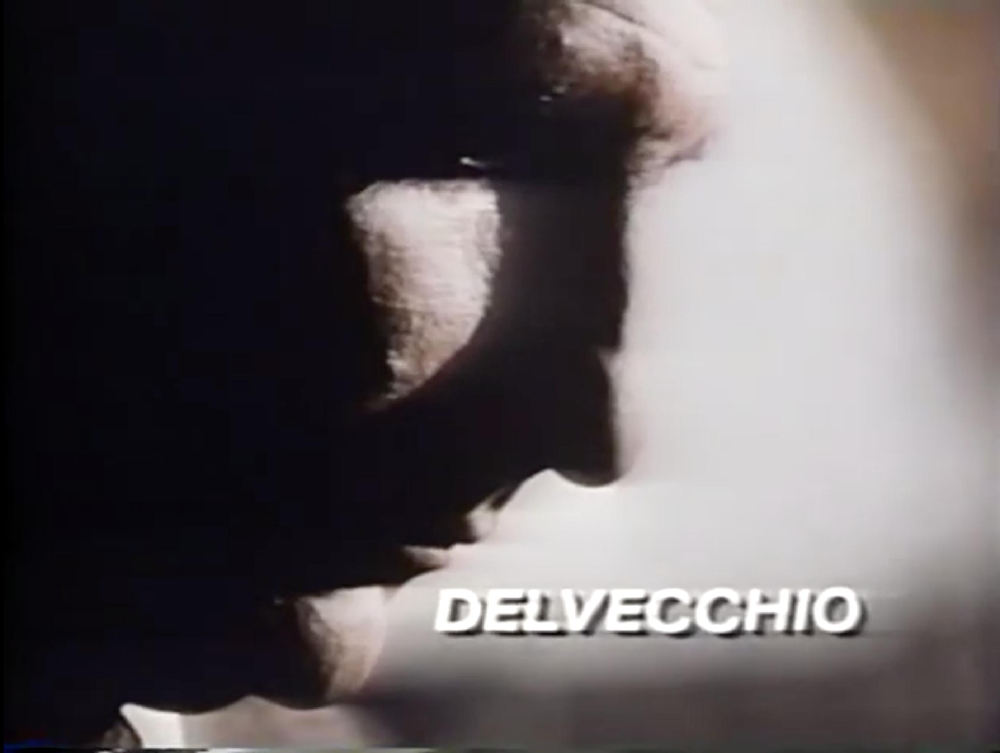
The show made its debut opposite The Streets of San Francisco, then in its final season and very much on the wane, slipping from twenty-sixth to fifty-second in the ratings. Sackheim hoped that the first episode would make an impact against weak programming before moving Delvecchio from Thursdays to Sundays two weeks later, where its opposition came from movies on both ABC and NBC. In his first few weeks on air alone, Delvecchio had to deal with unethical cops, desperate informants, traumatised rape victims, and loan sharks, setting the scene for an uncompromising season of hard to crack cases.
Unfortunately, despite Sackheim’s careful planning and some clever writing from Bochco, Michael Kozoll, and Michael Rhodes, and solid performances from Hirsch, Charles Haid, and Michael Conrad (the latter two later following Bochco and Kozoll to Hill Street Blues), Delvecchio never set the ratings on fire, finishing the season down in seventy-ninth place, well below its so-called weak opposition The Streets of San Francisco.
Dog and Cat (ABC): In 1976, male and female detective partnerships were rare enough in the LAPD that “dog and cat” was used to describe them in police slang, borrowed for the title of this show by creator Walter Hill. Having scripted a number of flicks including The Getaway, The Thief Who Came to Dinner, and The Drowning Pool, Hill had just directed his first feature – bare-knuckle boxing yarn Hard Times, featuring Charles Bronson – when a young ABC executive named Brandon Tartikoff made it his one of his first projects for the network.
Hill scripted the pilot (which apparently influenced Shane Black when he was creating Lethal Weapon) but was otherwise busy working on The Driver, leaving much of the work on Dog and Cat to executive producer Lawrence Gordon and future Supernatural showrunner Robert Singer. It was Singer who oversaw the casting of Lou Antonio and Kim Basinger, a former model who had just turned to acting and had a handful of small parts under her belt, including Charlie’s Angels (which she reportedly turned down a regular role on to take this part).
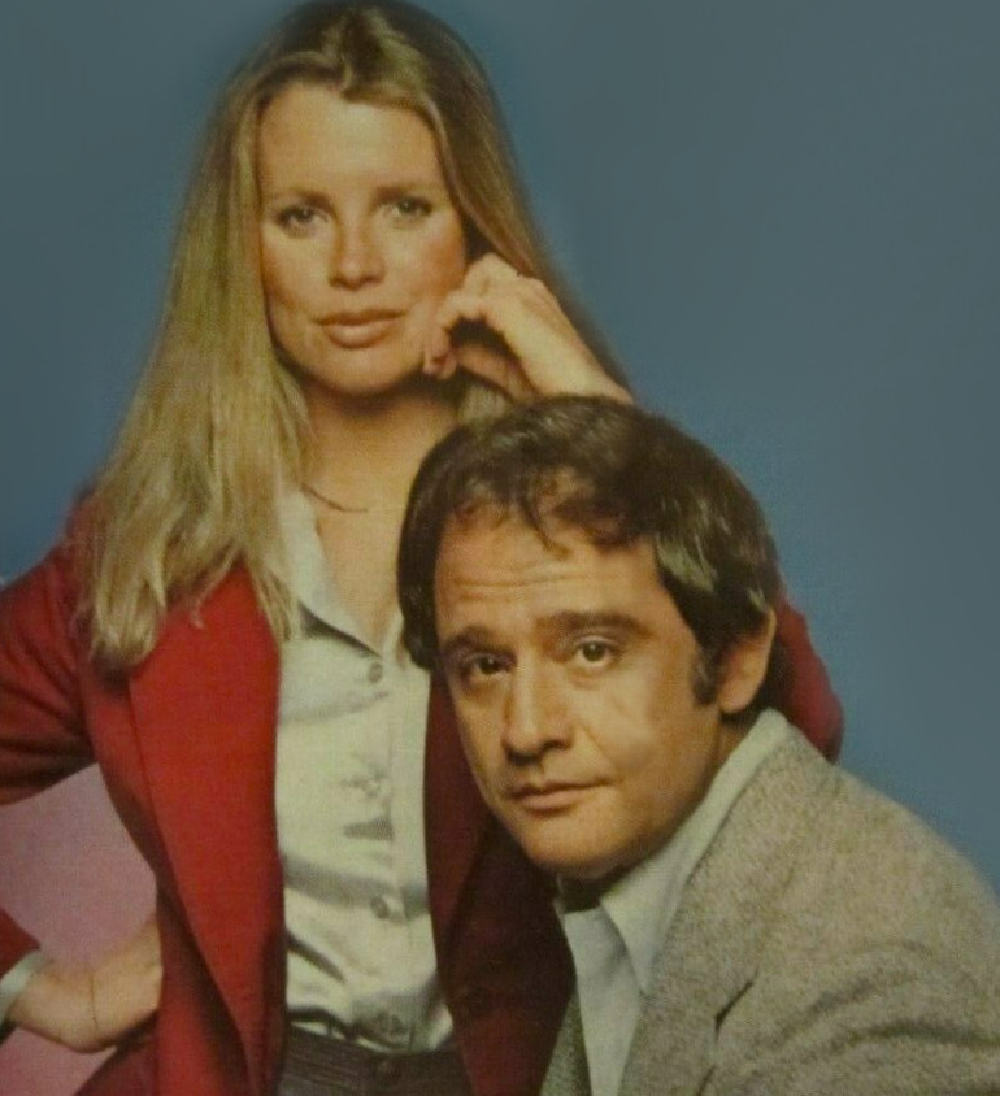
Hill’s pilot saw Jack Ramsey (Antonio) reluctantly accept the slightly oddball JZ Kane (Basinger) as his new partner when his old one is shot in the line of duty. Together, and completely platonically, they work undercover to ferret out some of the LAPD’s most wanted. After a promising start, and with Starsky and Hutch as a lead-in, the show hit a hiccup in week two when the planned episode, “Live Bait,” was pushed back a week due to its controversial subject matter – a serial rapist – and replaced with a jewel heist yarn.
The episode did air the next week but it was clear that the network weren’t completely behind the show, despite some positive reviews for both the concept and Basinger’s performance. There was a two-week gap between episodes three and four, by which point a decision seemed to have been made to cancel the show. Just seven episodes were completed, the last of which trickled out in mid-May 1977 after another three-week break, Ramsey and Kane’s beat-up old Volkswagen Beetle never to be seen around the streets of LA again.
Next time on The Telephemera Years: 1976’s unsold pilots, with witches, detectives, and a proto-Lost!
Check out our other Telephemera articles:
The Telephemera Years: pre-1965 (part 1, 2, 3, 4)
The Telephemera Years: 1966 (part 1, 2, 3, 4)
The Telephemera Years: 1967 (part 1, 2, 3, 4)
The Telephemera Years: 1968 (part 1, 2, 3, 4)
The Telephemera Years: 1969 (part 1, 2, 3, 4)
The Telephemera Years: 1970 (part 1, 2, 3, 4)
The Telephemera Years: 1971 (part 1, 2, 3, 4)
The Telephemera Years: 1973 (part 1, 2, 3, 4)
The Telephemera Years: 1974 (part 1, 2, 3, 4, 5)
The Telephemera Years: 1975 (part 1, 2, 3, 4)
The Telphemera Years: 1976 (part 1)
The Telephemera Years: 1977 (part 1, 2, 3, 4)
The Telephemera Years: 1978 (part 1, 2, 3, 4)
The Telephemera Years: 1980 (part 1, 2, 3, 4)
The Telephemera Years: 1981 (part 1, 2, 3, 4)
The Telephemera Years: 1982 (part 1, 2, 3, 4)
The Telephemera Years: 1983 (part 1, 2, 3, 4)
The Telephemera Years: 1984 (part 1, 2, 3, 4)
The Telephemera Years: 1986 (part 1, 2, 3, 4)
The Telephemera Years: 1987 (part 1, 2, 3, 4)
The Telephemera Years: 1989 (part 1, 2, 3, 4)
The Telephemera Years: 1990 (part 1, 2, 3, 4)
The Telephemera Years: 1992 (part 1, 2, 3, 4)
The Telephemera Years: 1995 (part 1, 2, 3, 4)
The Telephemera Years: 1997 (part 1, 2, 3, 4)
The Telephemera Years: 1998 (part 1, 2, 3, 4)
The Telephemera Years: 1999 (part 1, 2, 3, 4)
The Telephemera Years: 2000 (part 1, 2, 3, 4)
The Telephemera Years: 2002 (part 1, 2, 3, 4)
The Telephemera Years: 2003 (part 1, 2, 3, 4)
The Telephemera Years: 2005 (part 1, 2, 3, 4)
The Telephemera Years: 2006 (part 1, 2, 3, 4)
The Telephemera Years: 2008 (part 1, 2, 3, 4)
The Telephemera Years: O Canada! (part 1, 2, 3, 4)
Titans of Telephemera: Irwin Allen
Titans of Telephemera: Stephen J Cannell (part 1, 2, 3, 4)
Titans of Telephemera: DIC (part 1, 2)
Titans of Telephemera: Hanna-Barbera (part 1, 2, 3, 4, 5)
Titans of Telephemera: Kenneth Johnson
Titans of Telephemera: Sid & Marty Krofft
Titans of Telephemera: Glen A Larson (part 1, 2, 3, 4)

